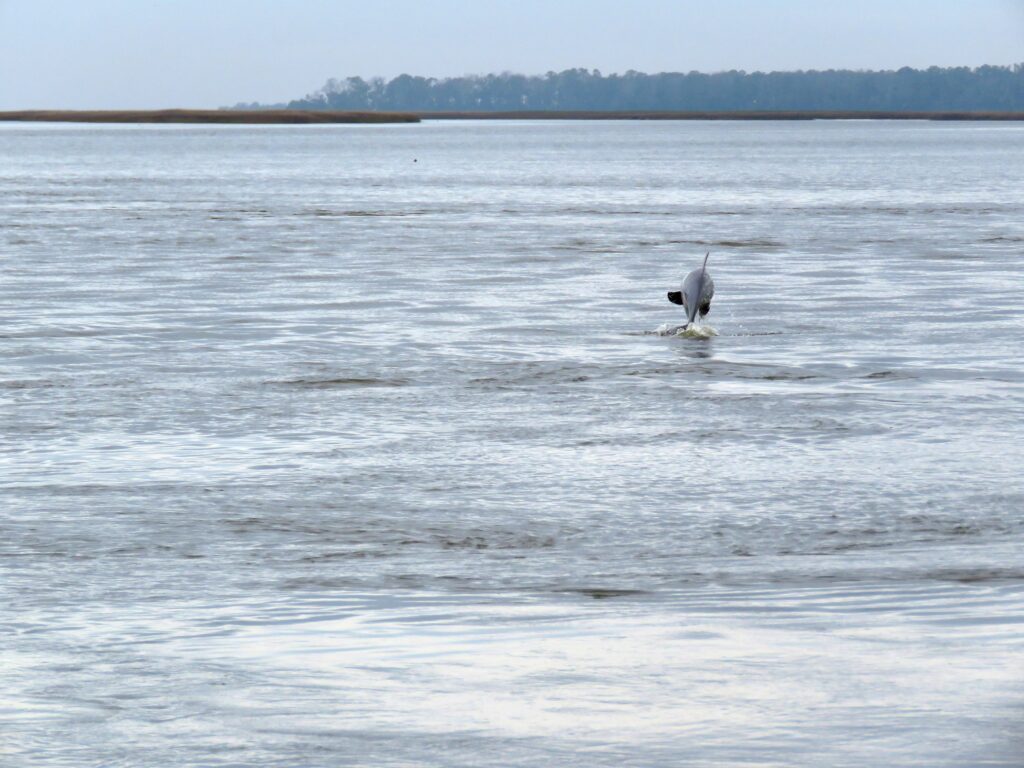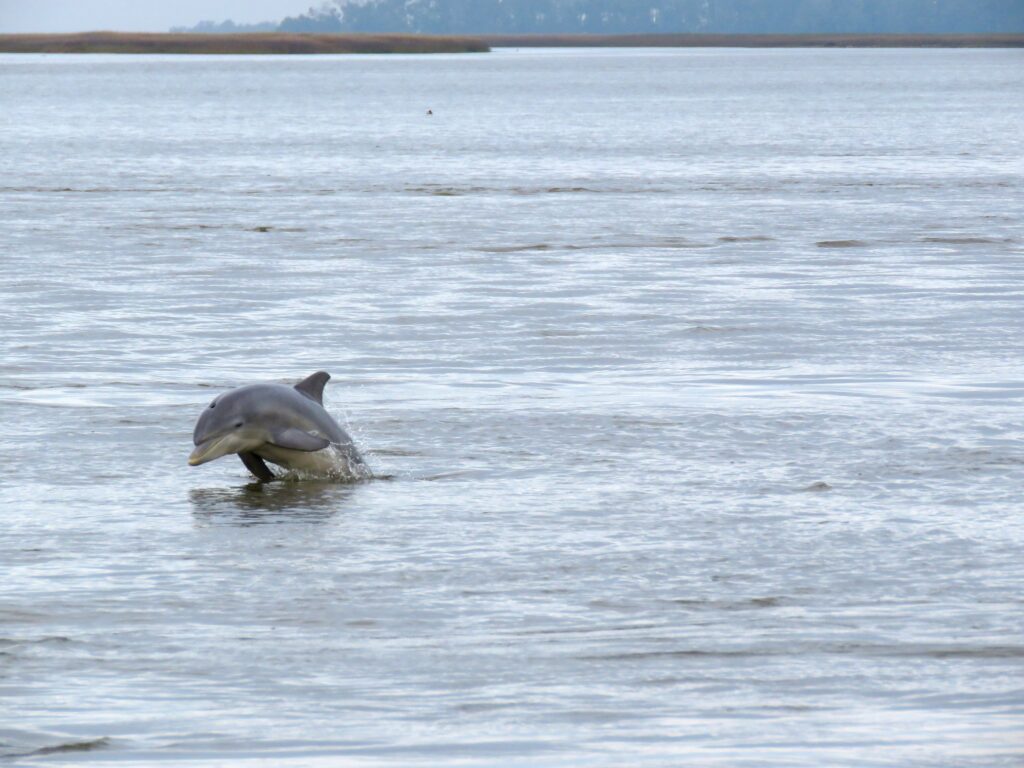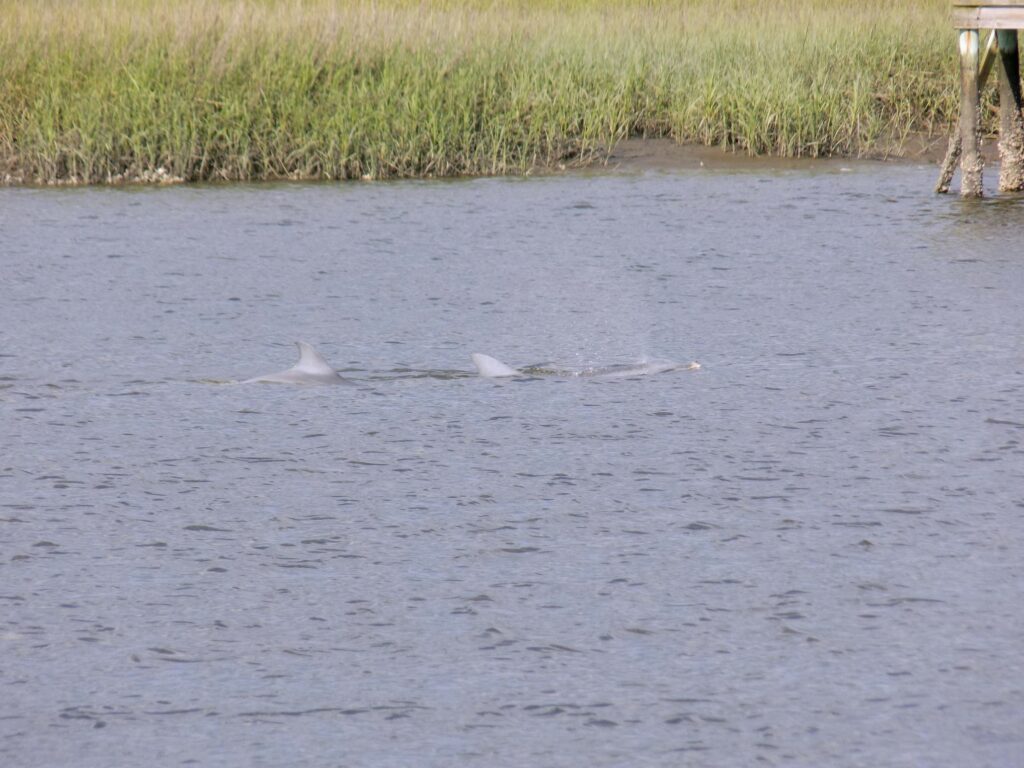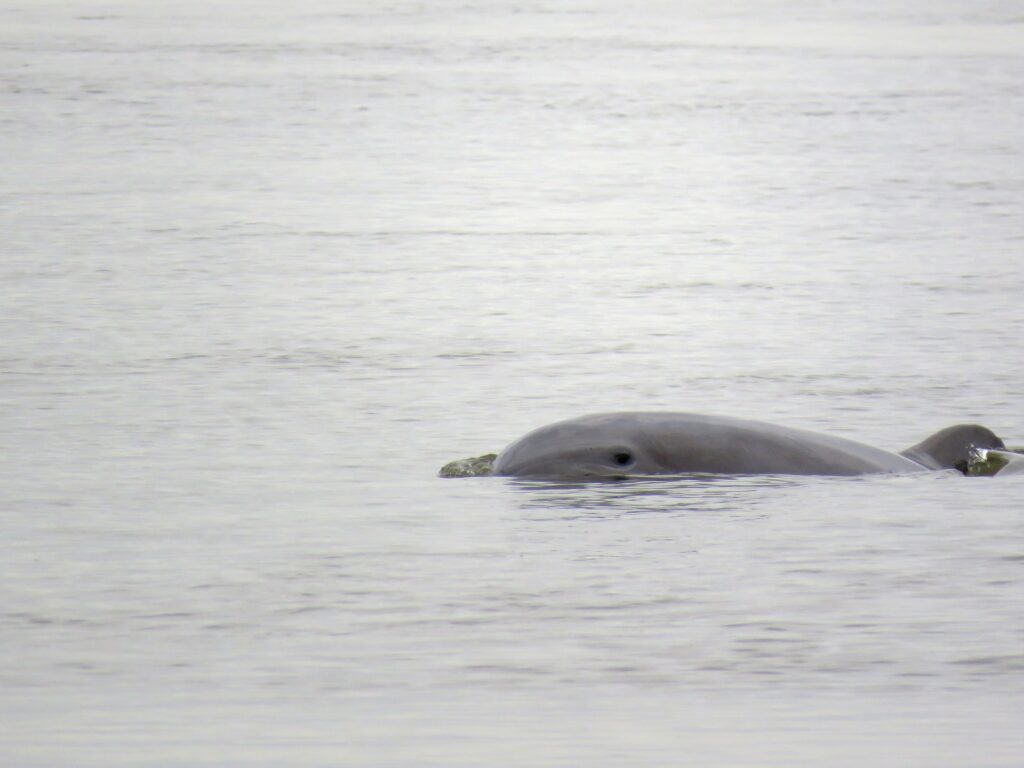




This week for Flora and Fauna Friday, we’ve got the second most intelligent species on Earth. This week we’re focusing on the Atlantic Bottlenose Dolphin (Tursiops truncatus). I’ll be the first to tell you that I’m not a marine biologist, it’s just not my thing. However, the Bottlenose Dolphin is such a ubiquitously loved and inarguably fascinating creature that I can’t avoid talking about it.
Bottlenose Dolphins are a species of marine mammal found throughout the temperate oceans of the globe that belong to the family Delphinidae, or the Oceanic Dolphins. Dolphins are a clade of Toothed Whale and are closely related but separate from Porpoises. Interestingly whales of all kinds, collectively known as Cetaceans, belong to the order Artiodactyla, which is the same order that includes Deer, Cattle, Antelopes, and Hippopotamuses. In fact, the Hippo is the closest living land ancestor of all whales.
Dolphins have a sleek streamlined appearance and glossy gray skin, like polished gunmetal blushed below with pink. Their mouth is “beaked”, narrow and distinct from the head, which lends them the common name of “Bottlenose” Dolphin, as their head resembles the shape of a bottle. Dolphins, like most Cetaceans, have nostrils on top of their skulls, called blowholes. These allow them to breath more conveniently while swimming at the surface of the water. Bottlenose Dolphins are usually 7 to 10 feet in length and can live to be over 50 years old. Their front legs have become fin-like, their rear limbs vanished, and their tail has grown a crescent shaped fluke on the end. Unlike fish and reptiles, who swim side to side, Dolphins swim with their tail by undulating their spinal column up and down. Dolphins are carnivorous and feed on fish, crustaceans, squid, and mollusks. They use echolocation to locate food in the murky waters of the coast. This works very similar to the sonar used by naval vessels.
In the west Atlantic, we have distinct populations of Bottlenose Dolphins, chiefly the inshore and offshore populations. The inshore populations are what we see around the Island and are generally smaller, have larger fins, and are more sedentary. On Edisto small pods are a common sight and sound throughout the coastal waterways, breaching with an exhalative sigh in sequence as they commute with the tide. The soft spitting of Oysters split by the explosive flop of a lone male fish-whacking beneath the bluff. Here in the Lowcountry, the Bottlenose Dolphins practice a unique feeding strategy called “strand feeding” seen nowhere else in the world. A pod of Dolphins will corral a school of fish between themselves and the shore of a tidal creek. Then, in unison, the Dolphins will charge the school side by side, forcing the fish to jump or be thrown onto the bank. The Dolphins turn sideways and their momentum carries them onto the bank with the fish, where they snatch up the stranded snacks. This feeding strategy is not instinctual. It is inherited socially within the pods. It’s a cultural phenomenon! This capacity to learn, strategize, work as a team to accomplish mutually beneficial goals, and pass that information between generations is a testament to the intelligence of this species. They are arguably the second smartest species on the planet, surpassed only by ourselves, and exceeding the capabilities of the great apes in many respects.